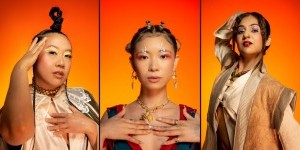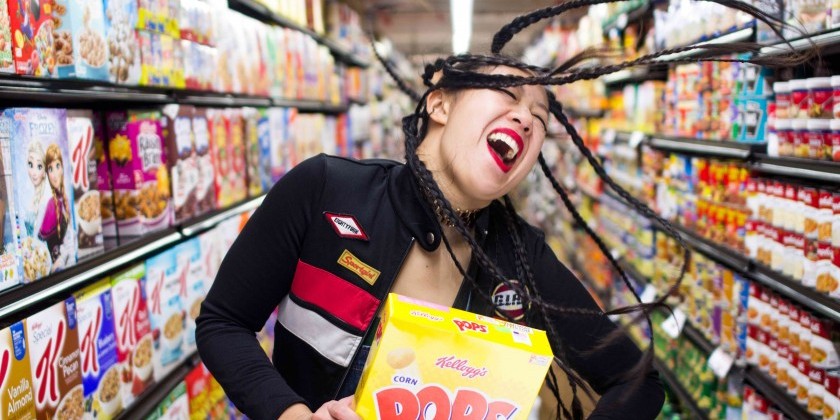
DAY IN THE LIFE OF DANCE: Sun Kim Dance Theatre’s “Lost and Found” Unearths Hope
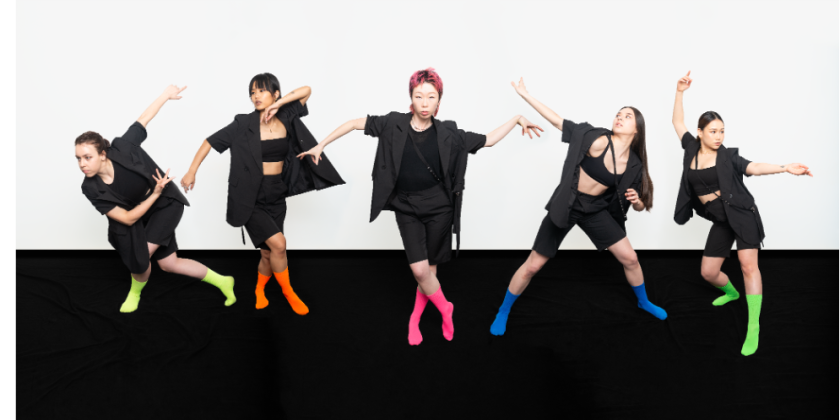
Sun(shine) during the Pandemic
I met Sun right in the first year of the pandemic. I was curating the #UnapologeticallyAsian Virtual Series 2020 (produced by my company, H+ | House of Chow) and rounding up signature Asian women in Hip-Hop Dance. I had originally asked Dassy Lee for a reference, and she directed me to Sun, who immediately agreed to be a part of the experience.
Right before we were about to go live for the program entitled, “Asian Women in Hip-Hop Dance,” I asked Sun how to pronounce her name. She lit up with a humongous smile and answered, "Sun, like the sun!"
Sun has been a human ray of sunshine in heavy times.

H+ | House of Chow's #UnapologeticallyAsian Virtual Series 2020 on Facebook LIVE, August 11, 2020
(L to R, top): Sherry Lin, Sun Kim, and B-Girl G.I. Jane
(L to R, bottom): Asia One, Uko Snowbunny, and Yvonne Huatin Chow
Connecting to Our Cultural Roots
Our opening activity was to share a significant object or experience from our culture. What was supposed to be a starting point literally became half the program, as each dancer opened up vulnerably and beautifully about their heritage. My whole body was buzzing as each dancer dived into their world of ancestral lineage and families.
Born and raised in South Korea, Sun’s sharing of “Han” was a memorable moment of learning for me. Han is the concept of emotion (like grief or resentment) depicted in films, poems, or music. Sun taught us that central to Han is loss of identity, typically associated with families who were separated during the Korean War, or from growing up in a divided country. Sun's sharing was a doorway to understanding the unique depth of emotional feeling and expression in Korean culture.
It's no wonder that, fast forward, three years later, Sun has directed and choreographed a torrentially emotional piece based in spoken word and Popping-based storytelling. Sun Kim Dance Theatre (SKDT) premiered this piece, Lost and Found, as a full-length feature in New York City at Peridance’s KnJ Theater on Saturday, November 11, 2023.
Following The Box
I have had the privilege of following this piece’s development. It was first released as a 10-minute short film, then shown as a work in progress at I Love Dance Studio back in the summer of 2022. Those 10 minutes felt like a time warp into an alternate world of powerful women in black suits and colorful socks. And I wanted to venture further. As a fellow Asian, female, Hip-Hop Dancer and Popper who coexists in the concert dance-theater realm, to witness this piece's expansion and evolution was nothing short of absolutely, long-awaited magic.
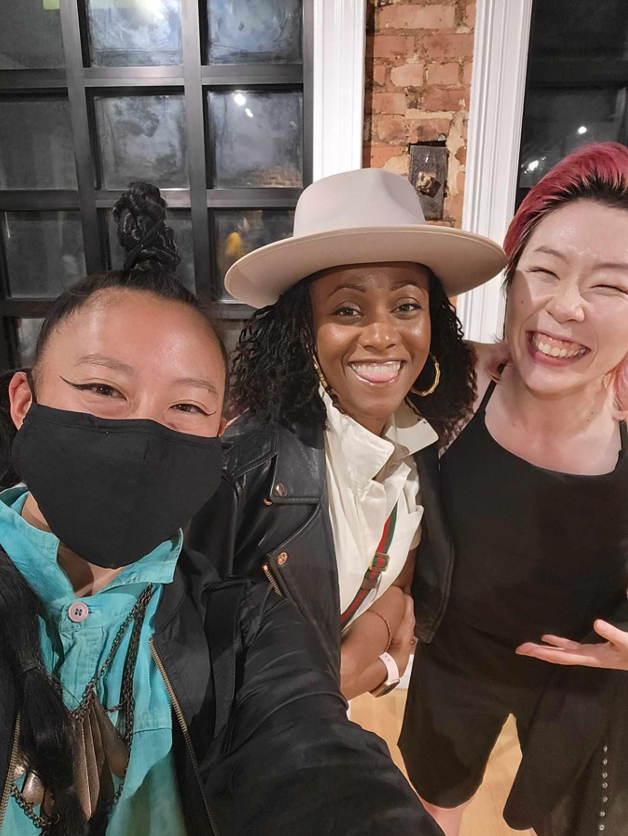
(L to R) Yvonne Huatin Chow, Michele Byrd-McPhee, and Sun Kim
Lost and Found Work in Progress at I Love Dance Studio, June 18, 2022
The piece would continue growing during a three-month residency at Peridance before showing at the San Francisco Hip-Hop Dance Festival, Works and Process as well as the New Victory Theater. At New Victory Theater, Sun was floored by the youth in the audience who, after the show, could identify and articulate that the dancers on stage represented a search for purpose. She knew from that point on, circumstances aside, that she needed to grow the piece to its full state. And that she did.
The Storytelling Inherent in Popping
To zoom out a bit, Hip-Hop Dance and Popping, specifically, have always been about telling stories. Popping, with origins in the Bay Area, California and a lineage to the BRS trifecta of Boogaloo, Robotting, and Strutting, was created by Black American youth. They developed full group routines with superb coordination and complete thematic costumes, set designs, and props. They often sped up the records they danced on to showcase the skill of keeping on a fast-paced time with consecutive movements. Crews like “Demons of Mind,” “Granny and The Robotroids,” “The Black Resurgents,” and “Electric Boogaloos” paved the way by creating fully imaginative worlds on stage from robots to space explorers. The artistry of this particular West Coast foundation has been a hidden gem of sorts compared to say New York’s prized Breaking. And it's thanks to communities/institutions like The Strutters Room, Hip-Hop Congress, Boogaloo Robotting Strutting (BRS) Dance Alliance, The Boogaloo Conservatory and so many more that we can access, learn, and experience the richness of this form.
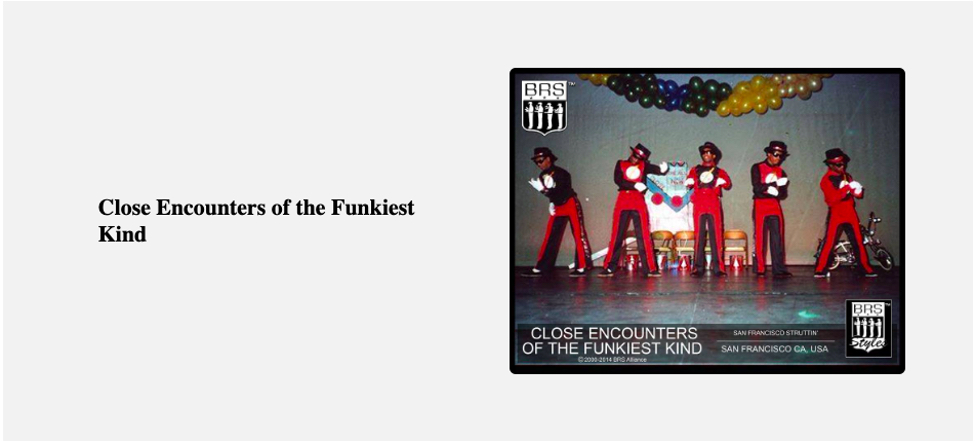
Close Encounters of the Funkiest Kind image via The Strutters Room website
The Development of Lost and Found
Given Popping’s strong lineage to storytelling, it’s only natural that over a year of consistent, hard work, Sun crafted a strong storyline for Lost and Found that grew the piece from 10 minutes to an hour. I felt completely spoiled by the volume of visually eye-catching, precision choreography that flooded the stage — in segments, in patterns, individually, in groups, dynamically and in stillness.
Littered within the dance were a range of human interactions — fighting, partnering, pushing, pulling, bullying, manipulating, leading, following. With Popping having a lexicon of over 160 derivatives, Sun showcased the gambit, and impressively, on many dancers who she noted after the piece, had only been learning Popping for a year. Hitting, Robotting, Animation, Tutting, Waving, Scarecrow, Old Man — you name it, she had it. And it was clear the dancers were drilled to ensure that even in their beginning stages, groove and foundation were evident especially when mixing in a contemporary flare of a turn every now and then. Sun’s deep respect for the art form of Popping is clear. None of the fusing diluted the funk and West Coast groove that is Popping. (Thank you.)
The main set design and prop that audience members have come to know and love is a gigantic black box that is constructed and deconstructed throughout the piece — a dance within itself that some performers jokingly remarked required more technicality than the dance itself. However, not one movement was missed and every beat was accounted for in the specificity of how bodies hid behind, reached out from, stood on top of, and were enclosed by this symbolic encasement of sorts. The sides of “The Box” functioned much like their own set of dancers. As the dancers allowed sounds and words to morph their bodily landscape, the box morphed from disparate pieces to an imposing dark force with its own meaning and feeling.

The Hole
“Embarking on a journey in search of hope can sometimes lead us into a labyrinth, where we may encounter obstacles and find ourselves surrounded by darkness.” — Lost & Found Program Description
The piece begins mysteriously with dancers traversing the stage and freezing right when they get to the edge of the box’s base. The 'walls' of said box are placed on the sides of the stage, acting as on-stage wings. One by one, each dancer tries not to fall into this 'Black Hole' of what I interpreted as that deep, unending experience of debilitating emotions. The air of this section feels ambiguous, almost as if to say we don't know what's on the other side if we let ourselves through. And when we finally do, 'Hope,' symbolized by Sun's character, is stolen. Sun's character fights to get out and the audience is quick to cheer as though we've won the game and we can all leave our seats to congratulate the dancers. But it seems too easy and this is only the first of many internal battles we witness on stage.

The Wall
“The pursuit of hope can evoke a whirlwind of emotions, and unpleasant thoughts have a way of trapping us in a void, becoming our own prison. At times, feeling lost can be more comforting than venturing into the unknown in pursuit of what we truly desire.” — Lost & Found Program Description
In the second section, we are introduced to the 'characters,' namely personifications of emotions. One by one, the dancers define the kind of emotion they represent by Popping to the syllabic rhythm of a female voice, an internal dialogue audible throughout this section.
The colorful socks stand out so brightly neon in a vast sea of blackness, each representing a different emotion. We meet Fear, Ego, Insecurity, Discouragement and Hope (which Sun notes in our post-show conversation, is not an emotion, but certainly takes on the protagonist role of the emotional circuit.)
Sun packs in a myriad of mesmerizing combinations involving canon sequences, contrasting textures of tension, intimidating shapes created by groupings that encroach your soul, and high energy, non-stop sequencing of movements that break off into sub-patterns. We the audience are visually stimulated and overwhelmed in the best way possible, and have no choice but to look and feel the weight of dizzying emotions that the dancers represent.

The Box
“...embark on a voyage of self-realization, discovering what you have lost
and allowing it to find its way back to you.”
— Lost & Found Program Description
In the third section, the voice switches to a male pitch and the different emotions have conversations with one another, speaking about a proverbial door to get out of the box. Resounding sound bites like, “There is no door,” “She's seeing things she wants to see,” or, “It's all in her head," feel all too familiar, as we're hearing someone who senses widely and deeply. Being lost in our own emotions can mire reality and have us questioning what we are perceiving.
At the end of this section, there's a beautiful bridge that is built with the dancers extending a hand to a dancer across from them in a long line from upstage to downstage. They lift their hands up like a game of 'London Bridge' and each dancer passes through. Again, we the audience might feel as if we are out of that dark place, finally, but the character representing 'Fear' passes through last and looks unresolved. We are not yet done.

Because emotions are an essential part of human existence, we must learn to work with them, not against them.
The piece ends in silence from a lack of music, but not from the dancers. In a strong block, they repeat a choreographed section from the very beginning. The dancers sustain a downward bounce while pumping their arms as if they're running in place, focusing forward at each cardinal direction. Before shifting to the next direction, they let out a big “HA,” exerting from the work they've done.

As I watched this I was reminded of the hope that Sun wants us to remember. To keep looking forward, breathing, and moving with your tribe steadily and determinedly towards your pursuit in life.
Created in 2020 as a way to lift up and include new voices in the conversation about dance, The Dance Enthusiast's Moving Visions Initiative welcomes artists and other enthusiasts to be guest editors and guide our coverage. Moving Visions Editors share their passion, expertise, and curiosity with us as we celebrate their accomplishments and viewpoints.







